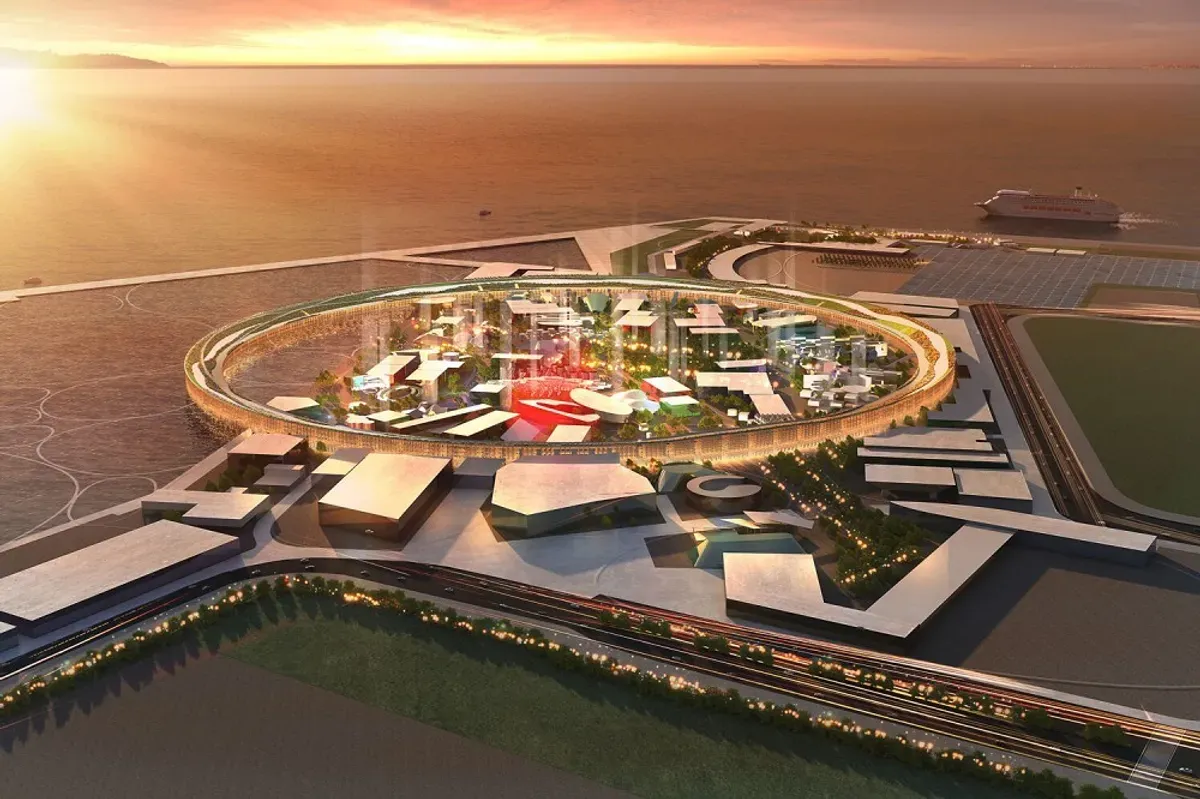Its most iconic structure—the “Grand Roof”—was officially certified by Guinness World Records in 2024 as the world’s largest wooden building.
This circular structure stretches approximately 2 kilometers in length and covers a total area of over 60,000 square meters. Combining pathways and shading functions, it not only impresses the world with its monumental scale and structural engineering, but also symbolizes the Expo’s core theme of “Unity in Diversity.”
Fostering Connection and Coexistence Within a Circle
Designed by renowned Japanese architect Sou Fujimoto, the “Grand Roof” forms a symbolic gateway that embraces national pavilions with a circular flow. This ring-shaped structure echoes the concept of the ensō—a Zen circle representing enlightenment and unity in Eastern philosophy. It conveys a powerful message: even in uncertain times, the world can come together, connect, and co-create a better future.
The lower level features an open-air corridor that offers a shaded walking route for visitors, while the upper level consists of an elevated walkway approximately 8 meters wide. This upper path invites leisurely strolls with panoramic views of the Expo site, the Osaka Bay, and the distant Kobe skyline—embodying the idea that “architecture is landscape.”
A Fusion of Technology and Tradition
As a flagship structure rooted in sustainability, the “Grand Roof” is built using a vast amount of glued laminated timber—totaling approximately 27,000 cubic meters. Of this, about 6,600 cubic meters were produced and supplied by WOODCORE, a company based in Namie Town, Fukushima Prefecture. The timber, primarily sourced from cedar, cypress, and larch, undergoes strict radiation monitoring and safety controls. Not only is it safe, but it also stands as a powerful symbol of Fukushima’s forestry revival after the 2011 earthquake and nuclear disaster.
The architectural structure is based on the traditional nuki construction method often found in Shinto shrines, reinforced with metal screws to enhance seismic resistance—demonstrating a harmonious blend of age-old craftsmanship and modern engineering.
Redefining the Future Value of Wood
Through the groundbreaking architecture of the “Grand Roof,” we witness the potential of wood to serve as the primary structural material for large-scale public buildings. This project also highlights how regional forestry and sustainable materials can converge to generate new value for cities, industries, and the environment.

References:
https://www.idshow.com.tw/article/id/6061
https://www.cna.com.tw/news/aopl/202504120020.aspx
https://www.wowlavie.com/article/240025342

